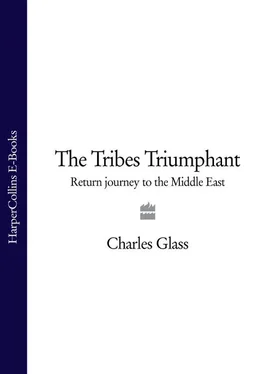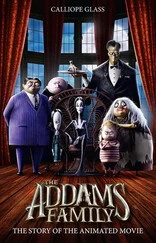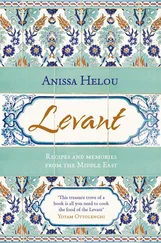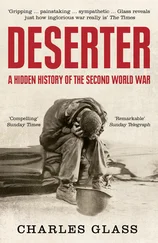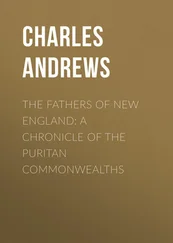Impatient, the driver took the bus up to the gate and said to a woman soldier inside the guard post, ‘This is the last bus.’ She told him to reverse to where he had been. He backed up to our original position twenty yards away, with the perilous grinding of old gears and brakes. The moment he stopped, the woman soldier waved to him to come forward again. At last, we were going through.
‘Palestine, formed and surrounded as it is, is a land of
tribes. That it can ever belong to one nation, even
though this were the Jews, is contrary to Nature
and Scripture.’
REVEREND GEORGE ADAM SMITH
The Historical Geography of the Holy Land (1894)
INSIDE THE ISRAELI BORDER SHED the old Haj asked me to fill in his forms. At this crossing between an Arab country and occupied Arab land, there were no Arabic entry cards. All were in Hebrew and English. The old man gave me his and his wife’s Jordanian passports and I wrote their names and addresses on the questionnaire. He was born in 1932. City of birth: Bethlehem. I hesitated at country, wanting not to complicate his entry, before writing what it said in the passport: Palestine. The purpose of their visit was to see their daughter. They thanked me and went ahead to the passport booth, where a young policewoman was polite to them both. The man laughed at something she said and then, taking his wife’s hand and wheeling his smart new suitcase, walked outside to a taxi.
Next at the passport counter came the man in the suit. After presenting his American passport, he answered the policewoman’s questions in an amiable but apprehensive way. Born in the West Bank in 1960, he now worked as a businessman in Jordan. The purpose of his visit was to see business associates in Jerusalem. Unfortunately, his passport had stamps from many trips to Europe. The Israelis took him apart, first the suitcases, then his dignity. Israeli police did not treat American citizens of Arab origin as they did other Americans. They looked on them as security risks. This man would have a hard time. I had done a story the year before about another Arab American, a young man named Anwar Mohammed, from Florida. The police had arrested him as he was leaving via this same border. They took him to the Moscobieh, the security headquarters in Jerusalem known in English as the Russian Compound. He was chained to a chair, interrogated, abused, held for two months and released without charge. He was lucky, saved perhaps by the cockiness that came from his youth, his karate black belt, his belief in his American passport and, just as important, the fact that there was no evidence against him. If he had been a Palestinian with no passport, only a refugee identity card, he might have stayed for years. The American Embassy lodged no protests on his behalf. An American diplomat pointed to a warning on the State Department website that Israel did not necessarily respect the American citizenship of Arabs born in Arab countries, Israel or the occupied territories. The State Department permitted the Israeli police to determine who was and who was not an American citizen.
Outside, in the dark car park, I found an Israeli taxi driver and asked him to take me to Jerusalem. The road from the Allenby – Hussein Bridge cut through the occupied – disputed Jordan Valley, knocking aside all obstacles in its straight path. Jericho, whose walls came tumbling down, sparkled on the dark horizon. ‘That her walls fell at the sound of Joshua’s trumpet,’ the Reverend George Adam Smith wrote in 1894, ‘is a summary of her history.’ No one had ever defended Jericho. Her low-lying position on the frontier between eastern desert and western mountain was indefensible and prey to raiders from both directions. Under the Oslo accords of 1993, Jericho was the first town that Israel allowed the new Palestinian administration to govern for itself, within limits.
As the road had created its way through the plain, it resculpted the hills beyond. On the Jordanian side, it had rambled with the land like the rolling English road’s drunken path of no resistance. Israel’s was an American highway for which mountains and villages and forests made way, a proud, broad road that would have me in Jerusalem for dinner. ‘There is no water,’ Reverend Smith wrote, ‘from Jericho till you reach the roots of the Mount of Olives.’ There was no traffic either. Israeli settlers were afraid to drive at night, and the Israeli army kept the Palestinians confined to their towns.
Daughter of the Final Solution
Lily Galili had asked me to meet her in front of the American Consulate in West Jerusalem at 7.15 in the evening. An Arab taxi took me from the American Colony Hotel across the ‘seam’, as Israelis called the old Green Line between east and west, to the consulate. The car stopped opposite the late-nineteenth-century consular building, and security guards raced out of their post towards the car. I asked the driver to go another hundred yards uphill to avoid an hour’s questioning. I got out and walked towards the consulate. An Israeli security guard asked me what I wanted. I was meeting a friend. What was the friend’s name? What was my name? I ignored him, standing as I was on a public pavement, and walked further down the hill in search of Lily. Another security guard, a young woman, followed and said, ‘Lily said she would wait for you at the corner.’
Lily’s corner was dark, out of range of the consulate’s spotlights, near a passage between two stone houses that led to her friend’s flat. She apologized for choosing the consulate as our rendezvous. She had forgotten about America’s security worries. We talked a bit in the dark, catching up before we went to the dinner. Her voice was like a precocious child’s, whose judgements, criticisms, observations and stories were astute and unexpected. She was leaving soon for Krakow, the city of her birth where she said her spirit was most at home, to celebrate her fifty-fifth birthday. Lily looked a good ten years younger than I did, and I was fifty. She was a journalist at Ha’aretz , a Tel Aviv daily that employed more talent – among them Danny Rubinstein, Gideon Levy, Amira Hass and Daniel Ben Simon – than the top ten Western newspapers combined. Lily and I had met in Cambridge, Massachusetts, when she was a Nieman fellow at Harvard. My friends Bernard Avishai and Sidra Ezrahi had taken me to a dinner that Lily cooked at her place, and we became friends. She once called me from London on my British cellphone, when I happened to be in a kosher restaurant in Krakow’s old ghetto. Klezmer music played behind me, and she told me about her love affair with Poland’s most beautiful Renaissance city. After the war, her family had returned to Krakow. Her mother brought her to Israel in 1956. She was ten.
Lily was clutching a bottle of wine for our American hostess, who she said had ‘made aliya ’. In the protected garden of an Arab house that looked as if it had been built around the same time as the American Consulate, were a group of English-speaking immigrants. They had all ‘made aliya ’, that is, immigrated or ‘risen up’ like a wave to live in Israel. There were two South Africans, Benji and Anne Pogrund; a British couple, the Goldmans; and a woman who appeared to be Canadian and did not say much. During the introductions, Anne Pogrund told me that her black eye, which I could not make out in the dark, was not what I thought it was. I didn’t think anything. She said she had really walked into a door. Her husband, a rotund ex-journalist with a bearded, friendly face, did not look like he would hit anyone, especially his wife. Benji Pogrund had been a journalist on the Rand Daily Mail , a brave and honourable opponent of South African apartheid. He and Anne, a painter, had fled Johannesburg for London and then for Israel. Bob Goldman was a videotape editor in the ABC News Jerusalem bureau. Our hostess worked for an Israeli millionaire named Stef Wertheimer.
Читать дальше
